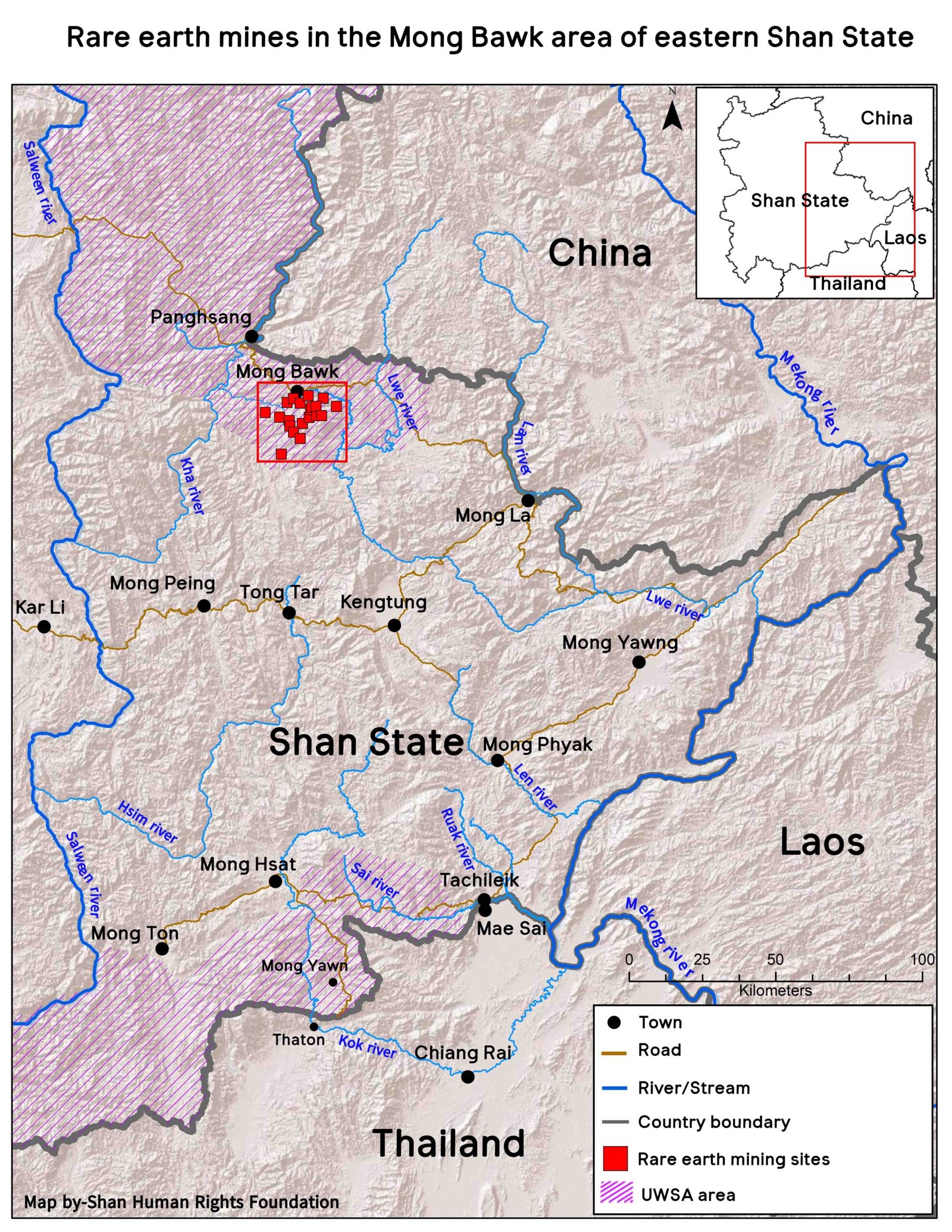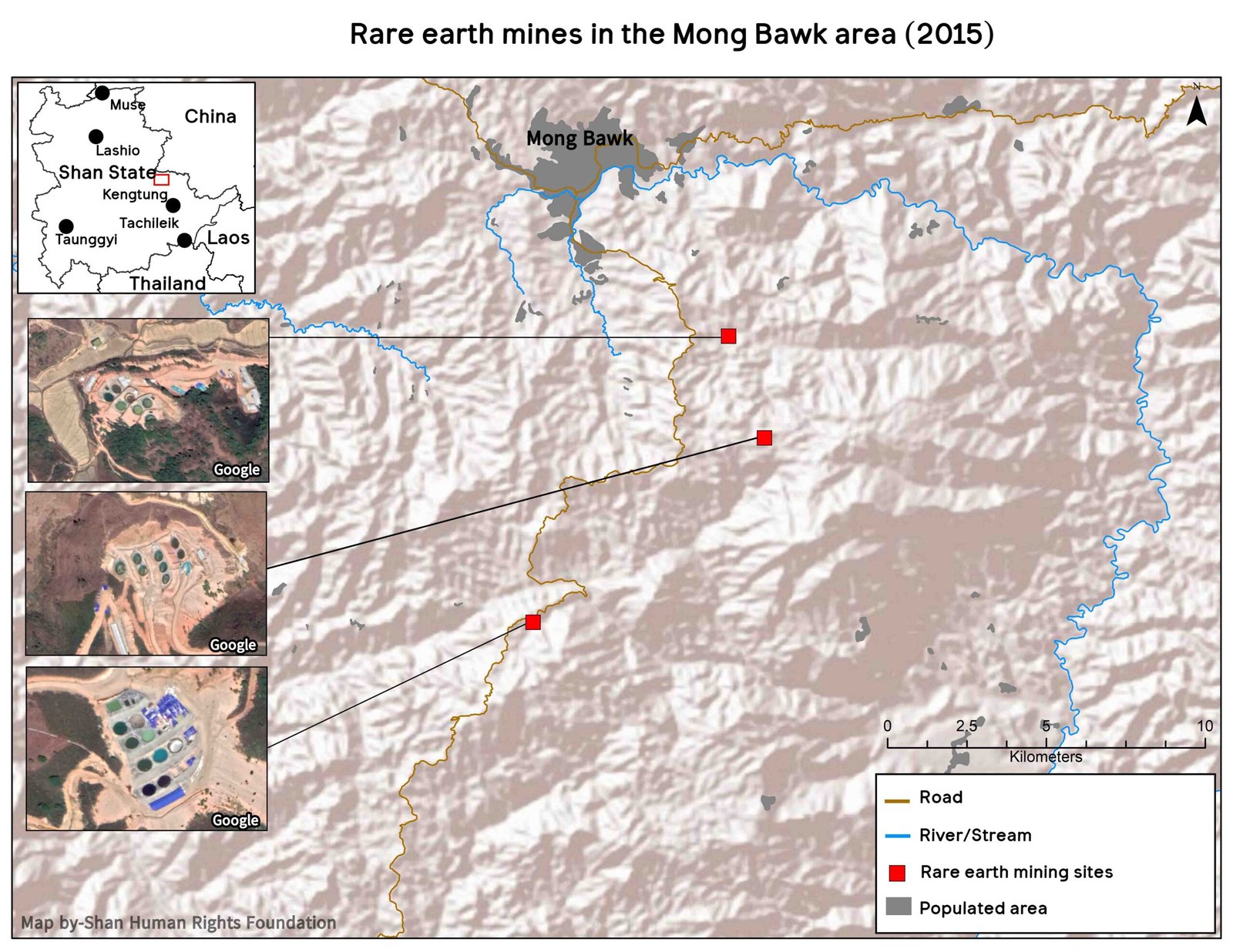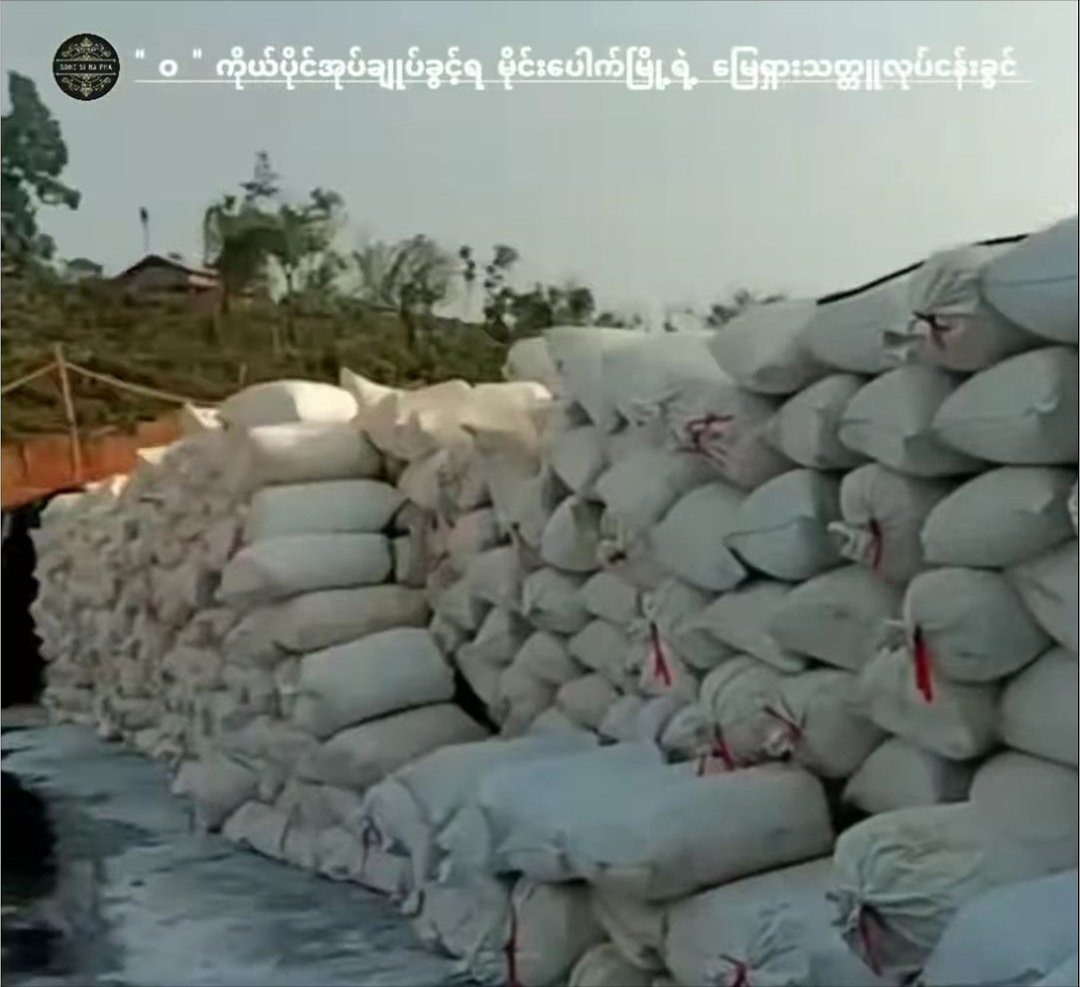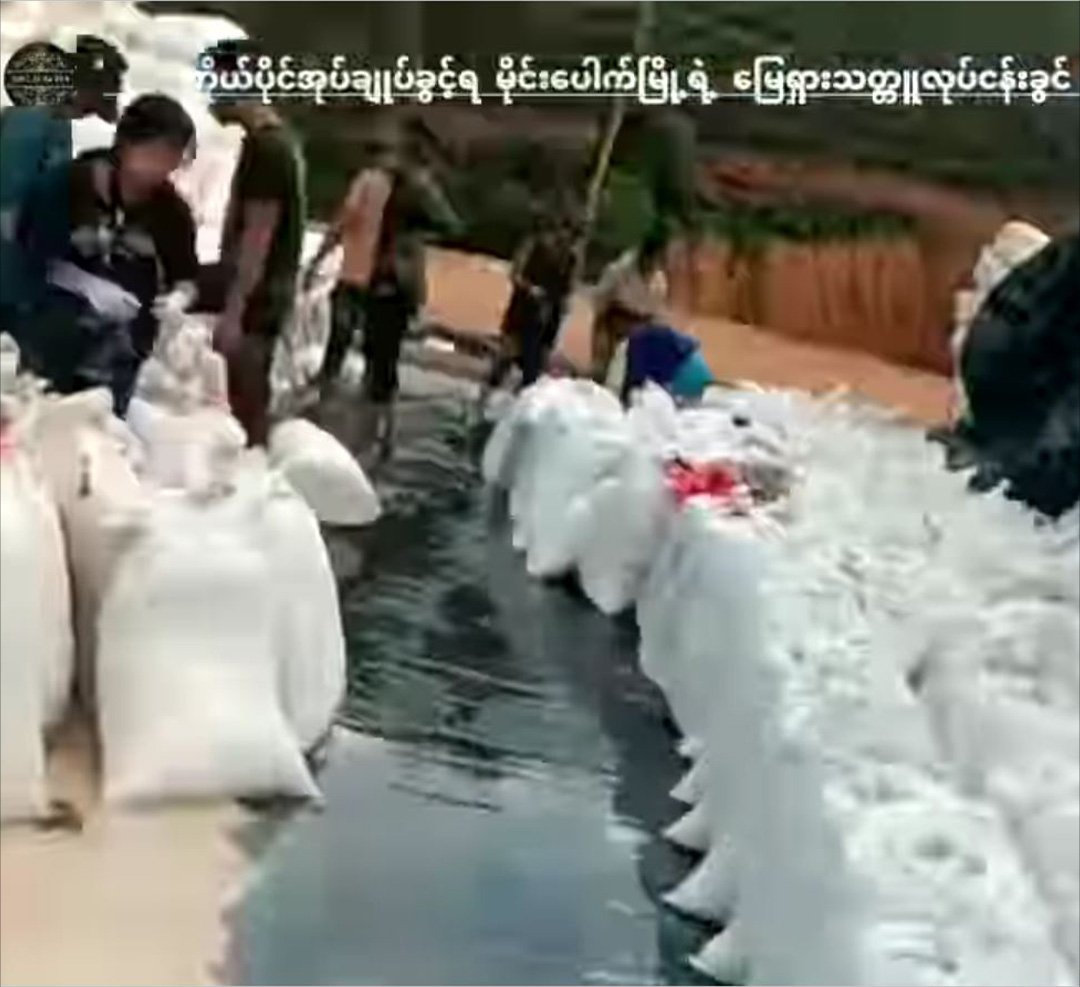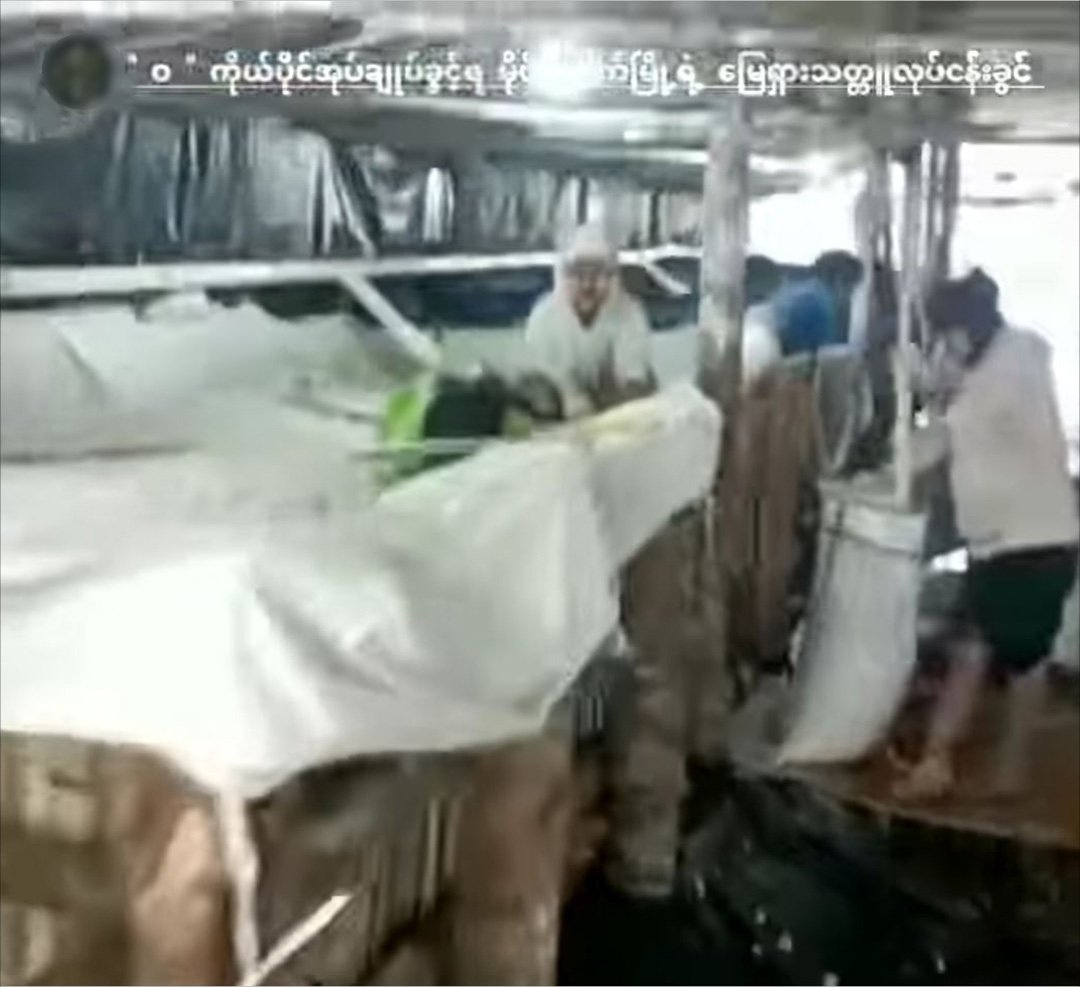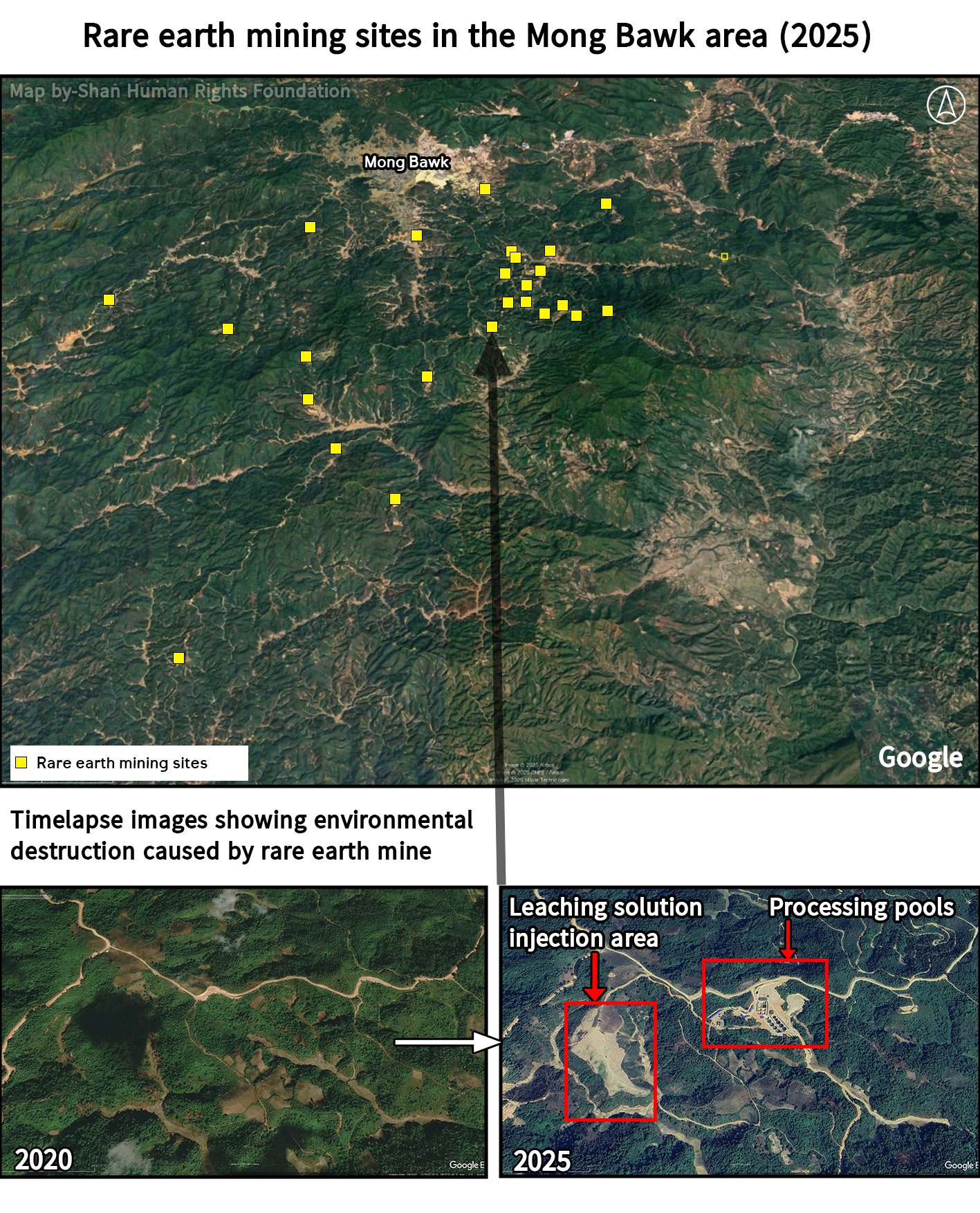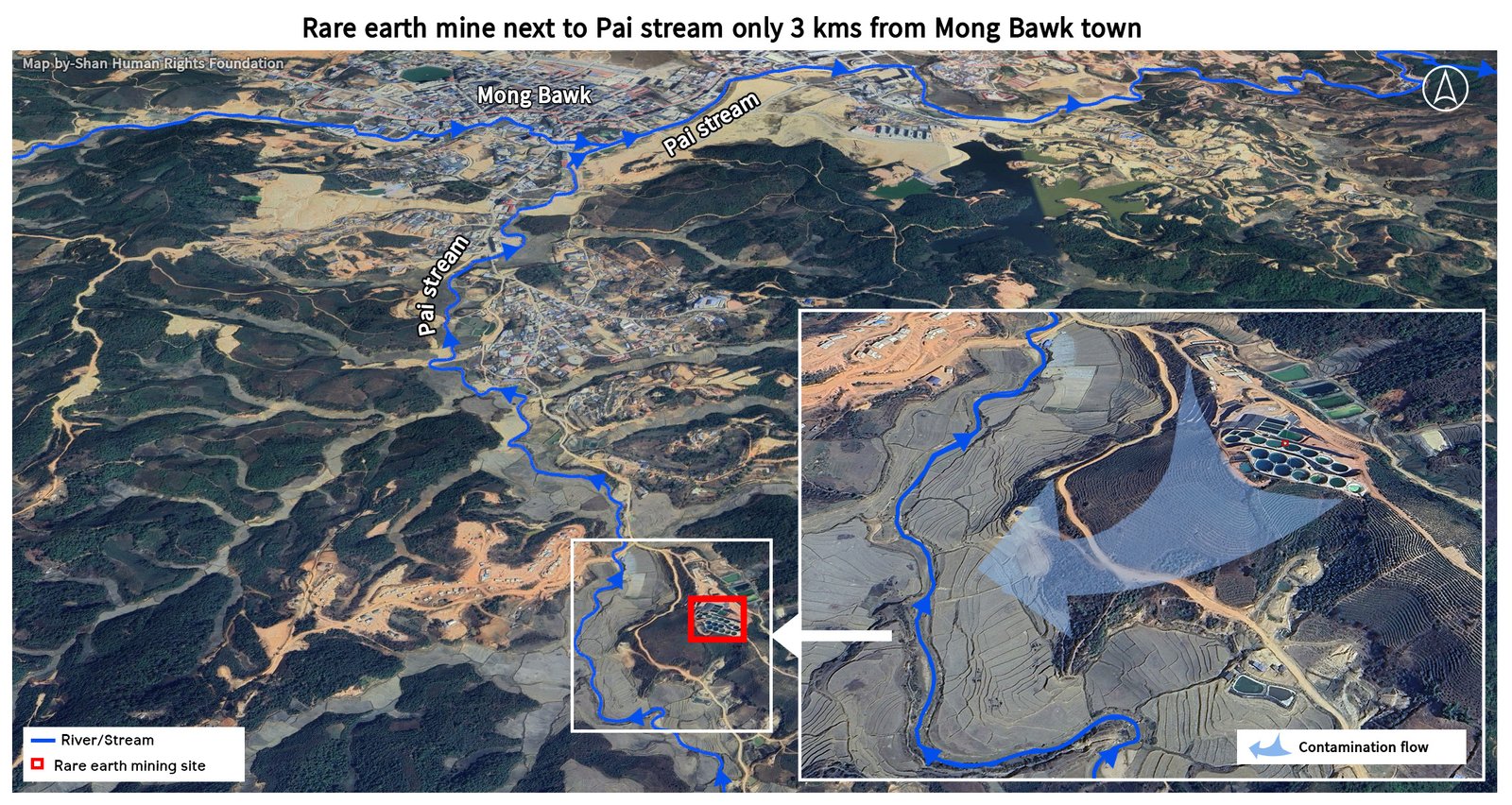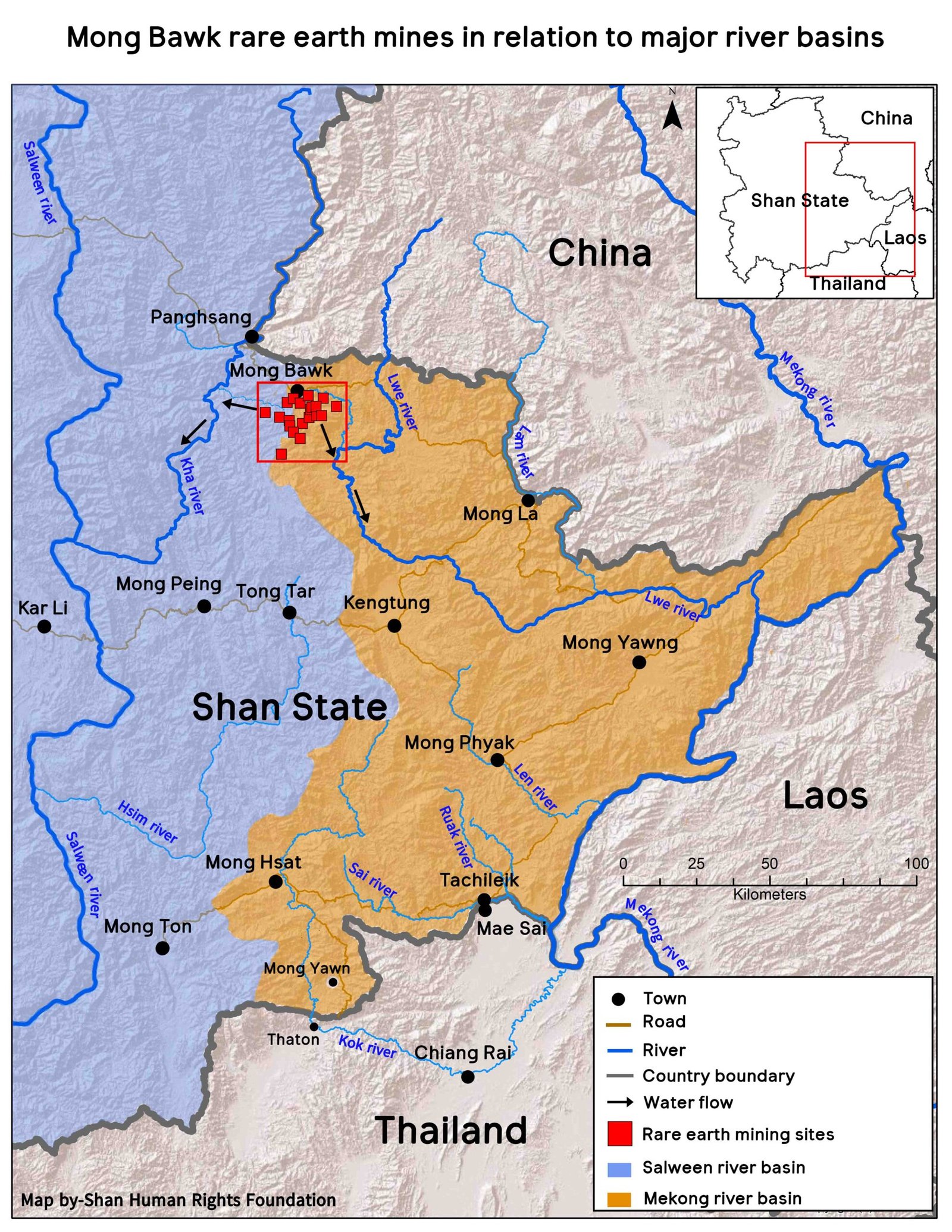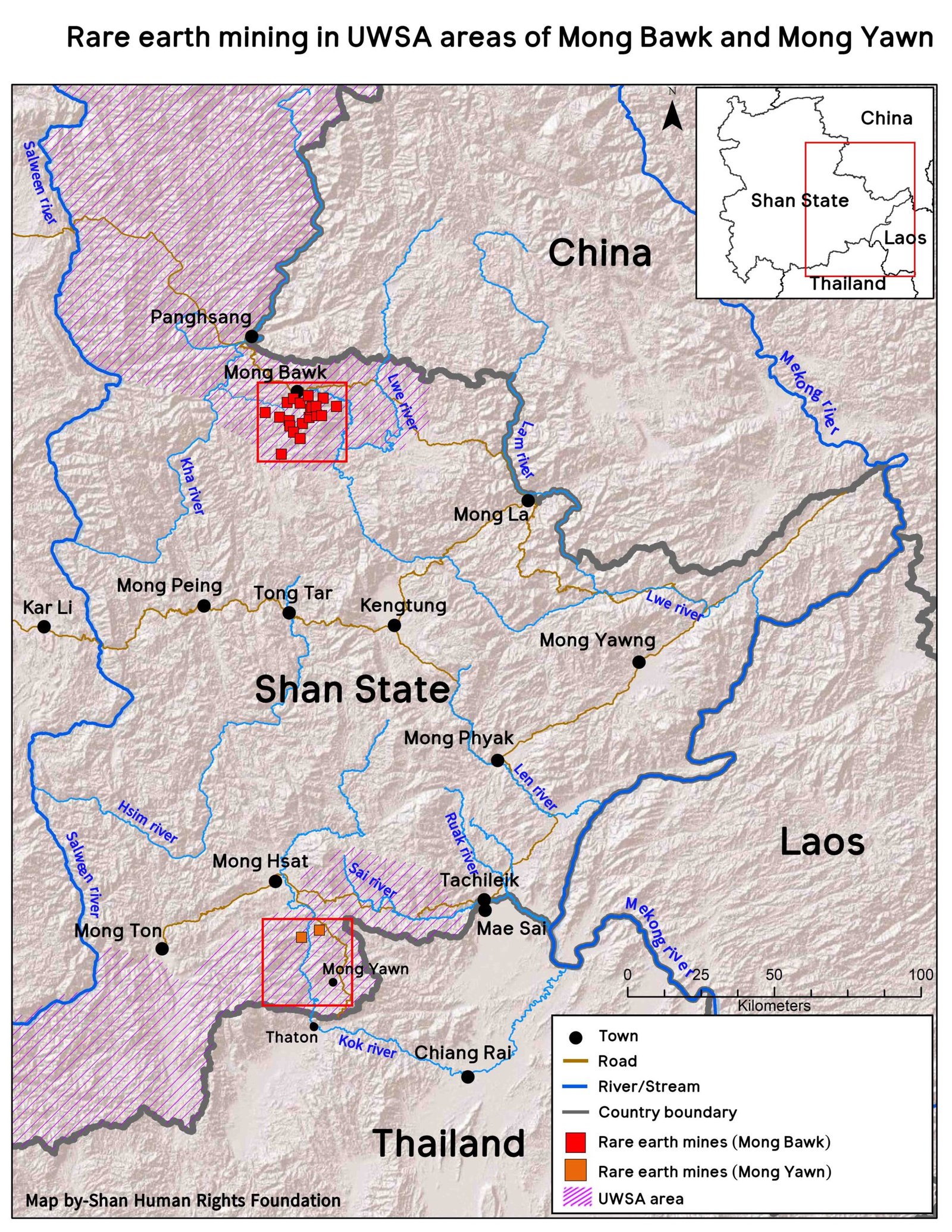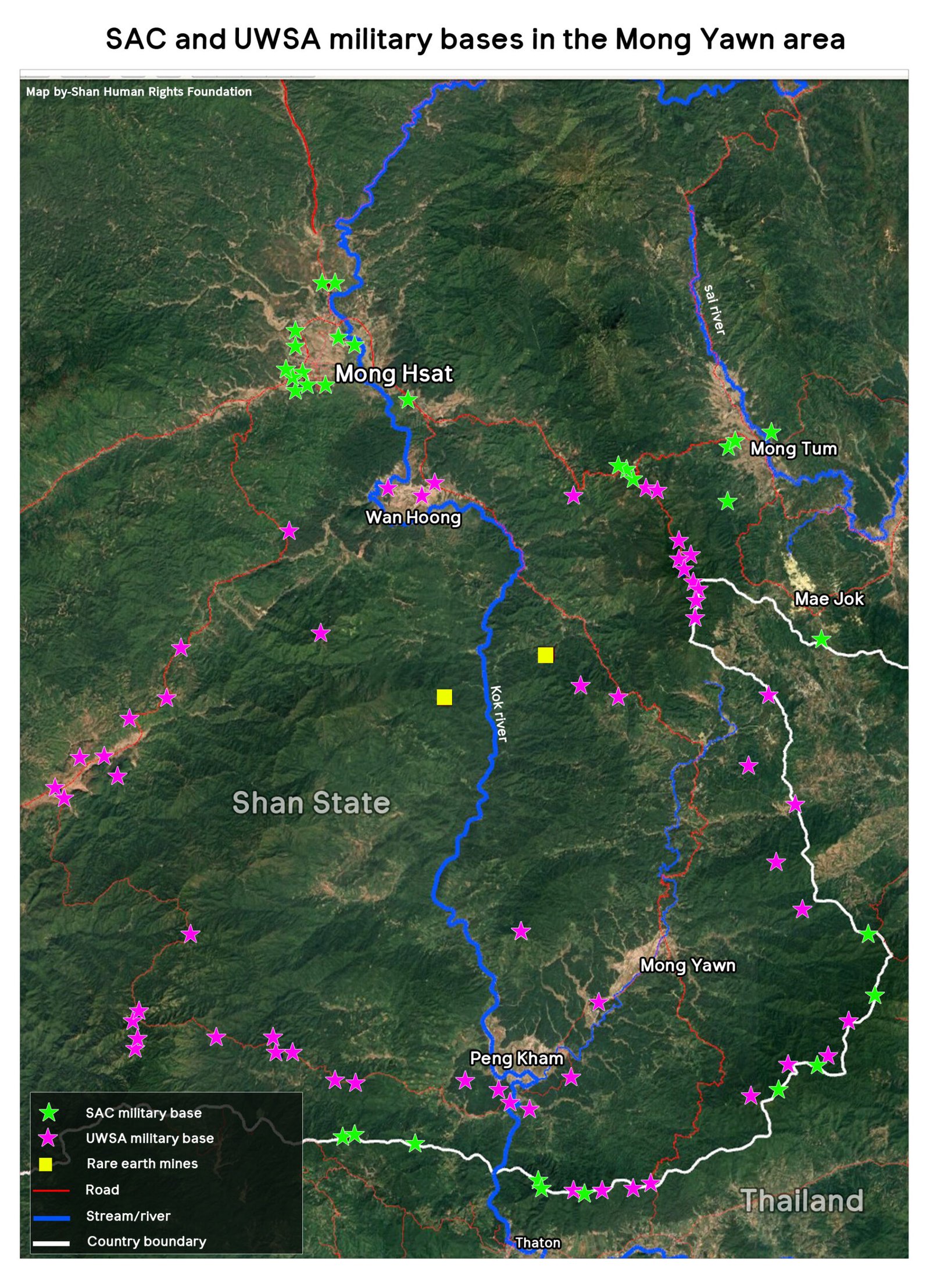June 19, 2025
Update: Satellite images expose rare earth mining expansion in northern UWSA area of Mong Bawk
Download PDF >>> Shan | Burmese | English | Thai
Satellite images reveal that the number of rare earth mining sites has increased over eightfold since 2015 in the northern United Wa State Army (UWSA) territory of Mong Bawk near the Shan State-China border, likely causing harmful contamination of local water resources.
In 2015, there were only three rare earth mines in the Mong Bawk area. By February 2025, satellite imagery showed 26 rare earth mines scattered across the hills south of the town. Three mines are located only three to four kilometers from the town.
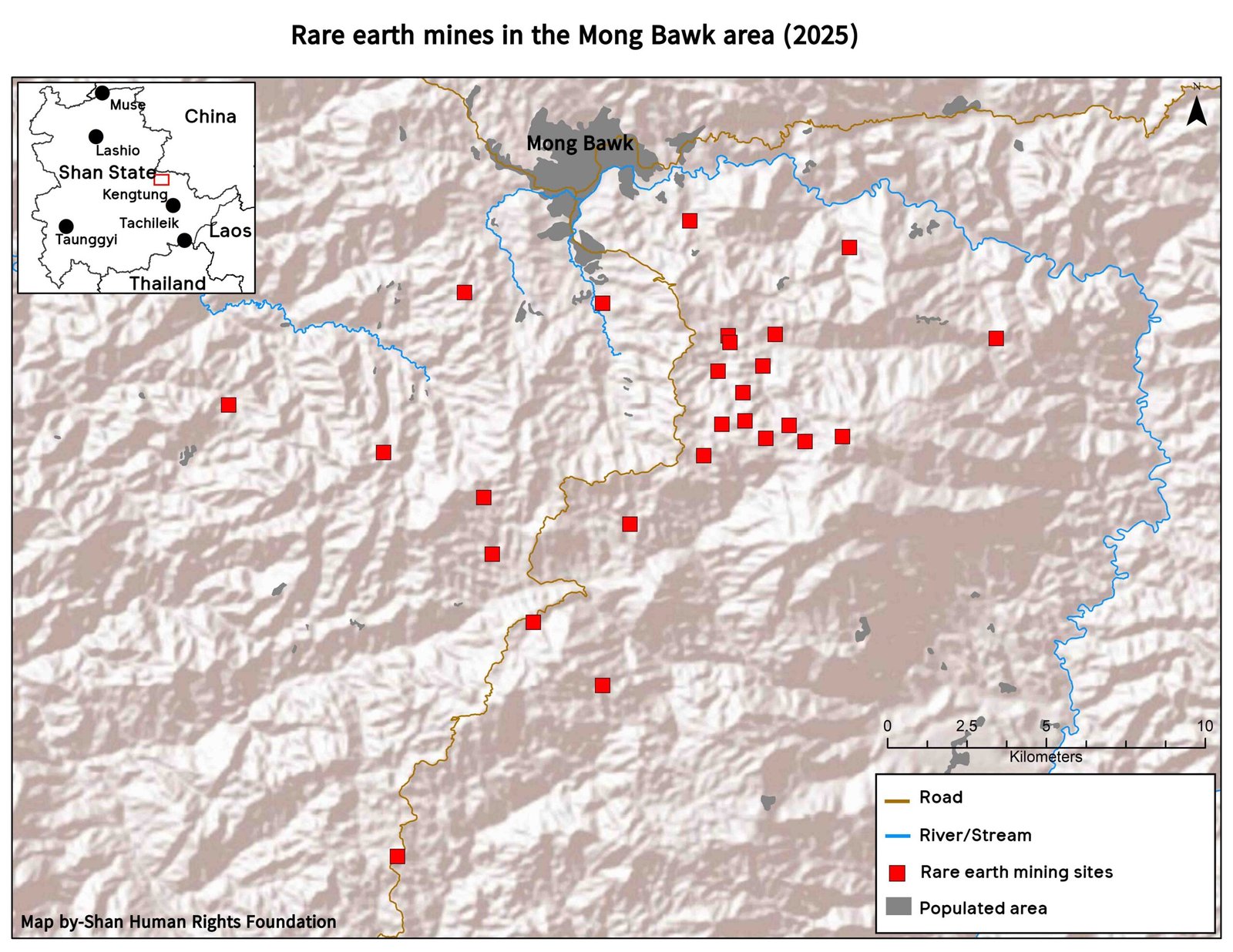 The distinctive layout of the mining sites around Mong Bawk, with rows of circular processing ponds, is exactly similar to the layout of rare earth mines in Kachin State, where “in situ leaching” is used to extract the rare earths. Video footage shared online by local mine workers near Mong Bawk also shows clearly that “in situ leaching” is being used.
The distinctive layout of the mining sites around Mong Bawk, with rows of circular processing ponds, is exactly similar to the layout of rare earth mines in Kachin State, where “in situ leaching” is used to extract the rare earths. Video footage shared online by local mine workers near Mong Bawk also shows clearly that “in situ leaching” is being used.
The “in situ leaching” process involves pouring chemicals through pipes into hills to leach out the rare earths. The chemical solution is then piped into pools, where further chemicals are added to extract the rare earth. This mining process is extremely environmentally damaging, contaminating surface and ground water sources, and threatening the health and livelihoods of communities living downstream of the mines.
One of the rare earth mines (started after 2022) is situated only three kilometers south of Mong Bawk town, beside the Pai stream which flows northwards through farmlands and alongside the town. It is highly likely that this stream and nearby ground water has become contaminated, threatening the health of thousands of town inhabitants.
During heavy rains caused by Typhoon Yagi in September last year, the entire central part of Mong Bawk town suffered unprecedented flooding from water cascading down from the surrounding mountains. The 3-feet-deep floodwaters – very likely contaminated by toxins from the nearby rare earth mines — only receded after three days.
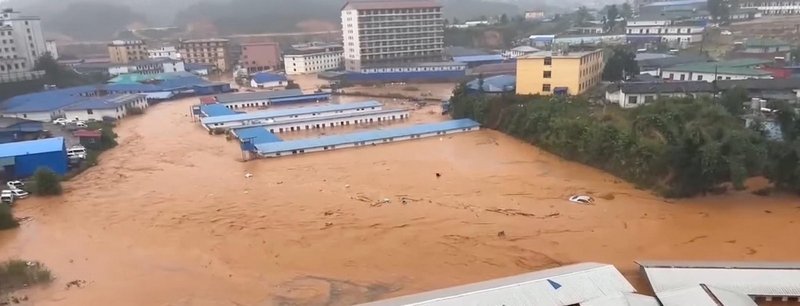
The mines in the Mong Bawk area straddle the two main river basins in Eastern Shan State: the Salween and Mekong. Water from the mining sites flows either westward into the Kha river, which joins the Salween in Shan State, or eastward into the Lwe river, which enters the Mekong at the Shan State-Laos border. Water contamination from the mines therefore does not impact China.
None of the rare earth mines near Mong Bawk are listed in the offical mining permit list published by the SAC military regime in November 2021 (the last publicly available list). There is clearly thus a local bilateral arrangement between the UWSA and China allowing Chinese-backed mining companies to extract and transport the rare earth across the Chinese border, without involving the Naypyidaw authorities.
This is different from the southern UWSA territories along the Thai border, where the Burma Army still maintains a presence and where any minerals extracted have to pass through SAC-controlled checkpoints before being exported. Thus, for sure, the recently exposed rare earth mining near the Kok river in Mong Yawn, southern Mong Hsat, is taking place with the permission and involvement of the SAC regime.
Mong Bawk is the second largest town in the northern UWSA area, located about 25 kilometers southeast of Panghsang, the UWSA capital. Formerly a small agricultural trading village populated mainly by Lahu and Shan, over the past ten years Mong Bawk has been completely transformed by Chinese investment into an urbanized “Special Development Zone” with many high-rise buildings.
As described in the SHRF report “Trapped in Hell”, Mong Bawk was one of the main cyber scamming hubs in the UWSA area before China’s crackdown on the scam industry along the Shan State-China border in late 2023.
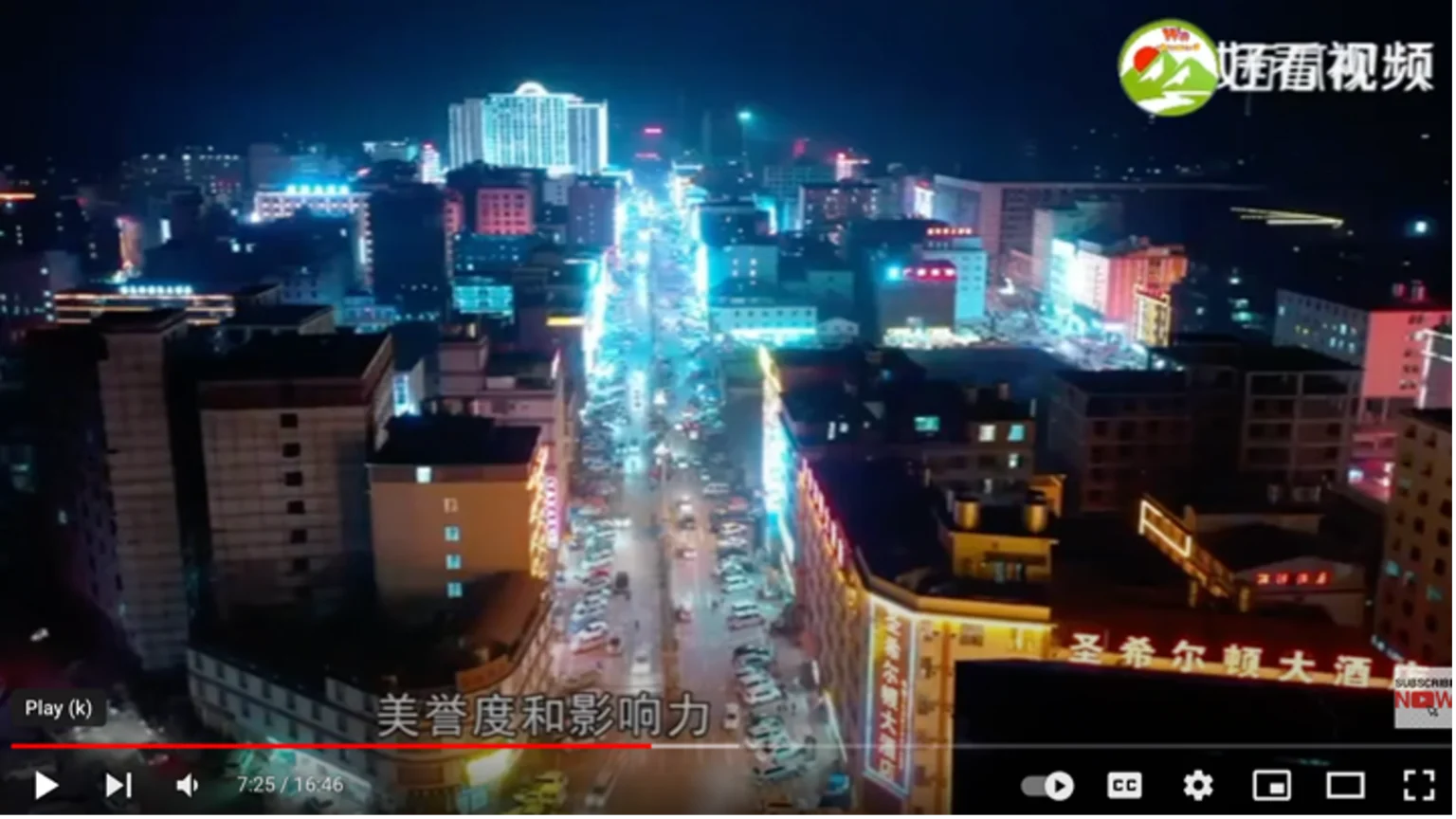
Contact:
Sai Hor Hseng + 66 94 728 6696 Signal (Shan, English)
Ying Leng Harn + 1 825 425 4099 Signal (Burmese)
Ying Hom + 44 7418 602 464 Signal (Thai)


